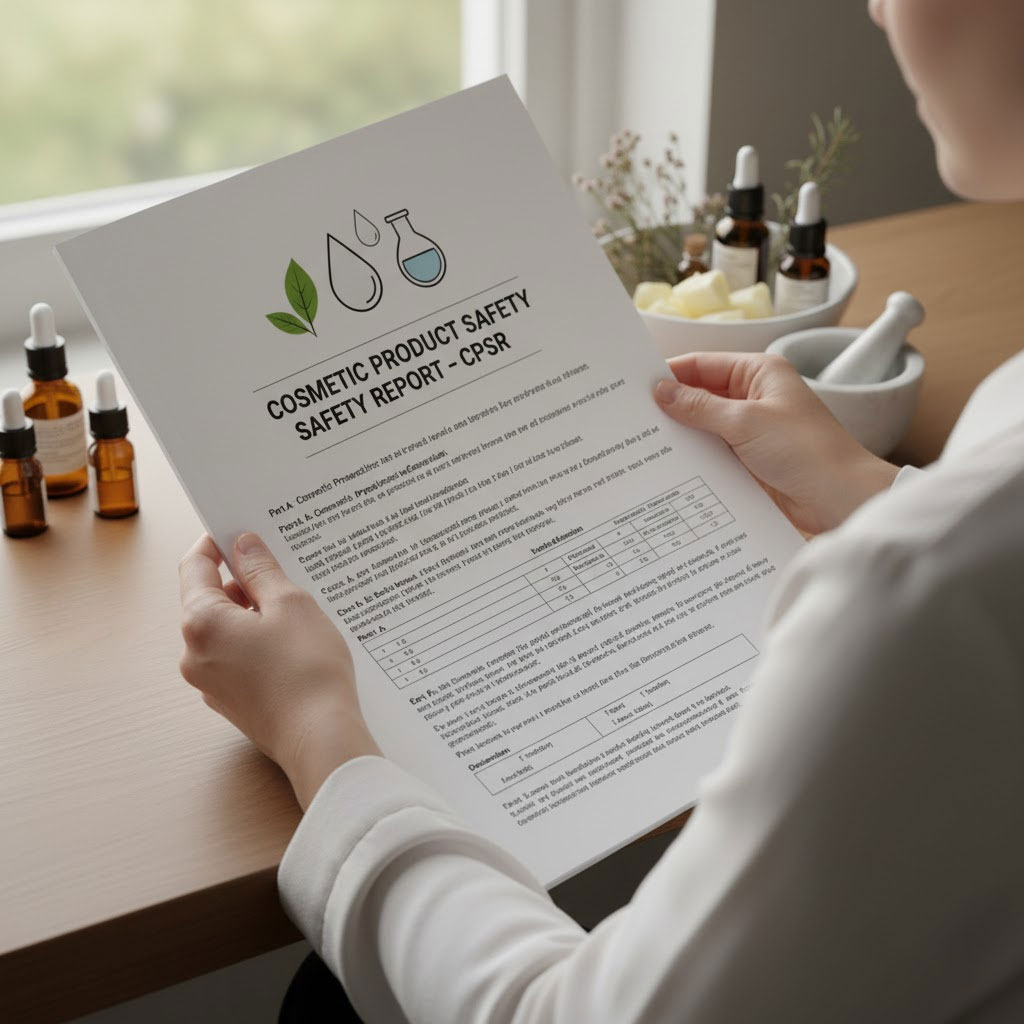Cosmetic Product Safety Report – CPSR
Fiyat aralığı: €150.00 - €400.00
Comprehensive preparation of the EU Cosmetic Product Safety Report (CPSR) in compliance with Regulation (EC) No 1223/2009, including both Part A (Safety Information) and Part B (Safety Assessment) by qualified safety assessors.
Description
Açıklama
The Cosmetic Product Safety Report (CPSR) is a mandatory document required under the EU Cosmetic Regulation (EC) No 1223/2009, specifically Article 10 and Annex I. It ensures that every cosmetic product placed on the European market is safe for human health when used under normal or reasonably foreseeable conditions.
The CPSR is divided into two main parts as outlined in Annex I of the Regulation:
Part A – Cosmetic Product Safety Information
Part A contains all the scientific and technical data necessary to evaluate the safety of the cosmetic product. This includes:
-
Product identification and category
-
Quantitative and qualitative composition (INCI list and ingredient concentrations)
-
Physical/chemical characteristics and stability of the product
-
Microbiological quality
-
Impurities, traces, and packaging material information
-
Normal and reasonably foreseeable use
-
Exposure assessment for each ingredient and product type
-
Toxicological profile of each substance used
-
Undesirable effects and serious undesirable effects (UE/SUE) data
-
Other relevant information from human studies or literature sources
Part B – Cosmetic Product Safety Assessment
Part B is prepared and signed by a qualified Safety Assessor, a professional with a background in toxicology, pharmacy, or a related scientific field.
It contains:
-
An expert evaluation of the information provided in Part A
-
A conclusion on product safety under the intended conditions of use
-
Labeling considerations and specific warnings if applicable
-
Reasoning supporting the safety conclusion
-
Assessor’s credentials and signature
The CPSR serves as a cornerstone of cosmetic product compliance within the EU. It must be included in the Product Information File (PIF) and made available to competent authorities upon request.
At Lexora Consultancy, our qualified safety assessors prepare fully compliant CPSRs according to the latest EU guidelines, ensuring that your cosmetic products meet all safety and regulatory requirements before being placed on the European market.
F.A.Q
Ek bilgi
| Who prepares the CPSR? | The CPSR is prepared and signed by our qualified Safety Assessors holding degrees in toxicology, pharmacy, or related scientific disciplines, as required under Article 10(2) of Regulation (EC) No 1223/2009. Each report is reviewed in line with Annex I requirements to ensure full compliance. |
|---|---|
| How long does it take to prepare a CPSR? | Once the Product Information File (PIF) and all necessary documents are complete and compliant, the CPSR is typically delivered within 3–5 business days. If additional information or testing is required, the timeline may vary depending on data availability. |
| What documents are required for CPSR preparation? | To prepare a fully compliant Cosmetic Product Safety Report (CPSR) in accordance with Annex I of Regulation (EC) No 1223/2009, the following documentation and data must be provided: Full formulation (quantitative and qualitative composition): Complete ingredient list with INCI names, exact concentrations (% w/w), and ingredient functions. Raw material documentation: Material Safety Data Sheets (MSDS) Certificates of Analysis (CoA) or technical specifications Allergen and purity information, where applicable Toxicological data: Available toxicological profiles or references (e.g., CIR, SCCS opinions, REACH data) for individual ingredients. Product specifications: pH, appearance, physical/chemical stability, and other relevant parameters. Stability and compatibility test results: To demonstrate product stability under intended storage conditions and packaging compatibility. Microbiological quality test results: Required for all products to verify initial microbiological quality and ensure compliance with ISO 17516:2014 limits. Challenge (preservative efficacy) test report: Required for products containing water or at risk of microbial contamination; may be exempt for low-risk, anhydrous, or alcohol-based formulations. Packaging material information: Description and specifications of the packaging in direct contact with the product (composition, type, potential migration data if available). Label and intended use: Final or draft product label showing mandatory particulars (ingredient list, warnings, responsible person, batch number, etc.) and description of product function and target area. Information on undesirable or serious undesirable effects (UE/SUE): If applicable, data or history of product safety issues. Supporting human studies or literature data: If clinical, dermatological, or patch tests have been performed, their reports should be provided. Providing complete, accurate, and well-structured documentation ensures an efficient evaluation and enables the Safety Assessor to issue a CPSR that fully complies with EU regulatory requirements. |
| Are product tests mandatory before CPSR preparation? | Yes, certain tests are mandatory and form part of the Product Information File (PIF). Stability and compatibility tests are required for all finished products to confirm product integrity and packaging compatibility. Microbiological testing must be provided for every product, regardless of type, to document the product’s initial microbiological quality in the PIF. Challenge testing may not be necessary for low-risk products (e.g. alcohol-based or anhydrous formulations), but is required for products containing water or with a higher risk of microbial contamination. Our team evaluates the product type and advises which tests are essential for compliance before the CPSR is issued. |

